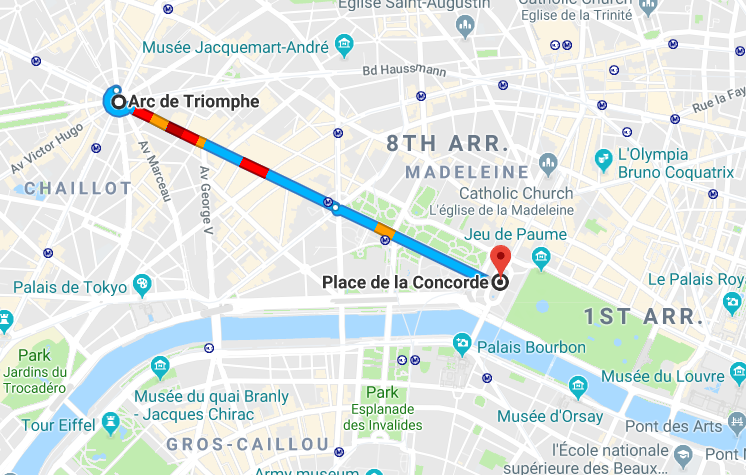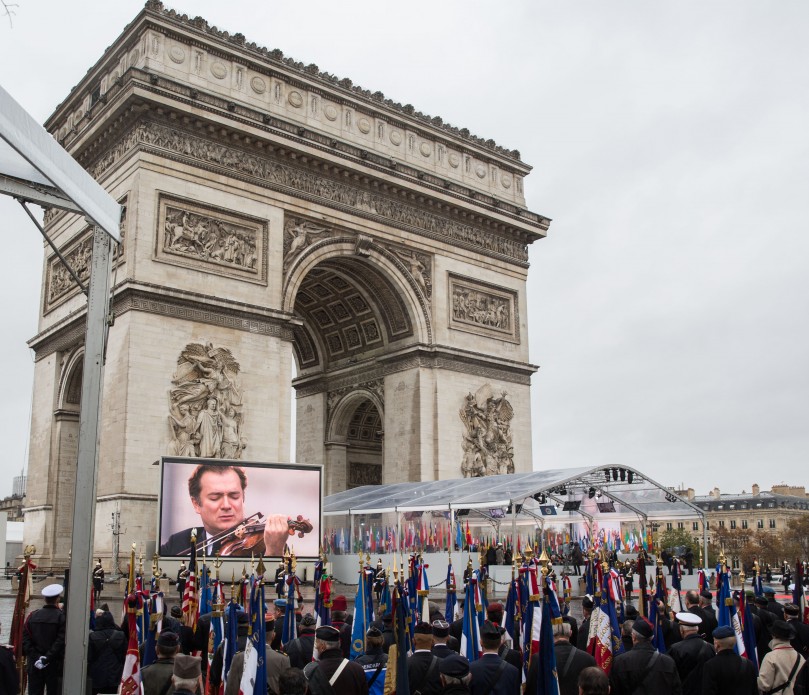Arc de Triomphe
To reach the Arc de Triomphe we leave Trocadéro behind and move to the northeast along Avenue Kléber or the President-Wilson Avenue or Avenue Pierre 1er de Serbie in about half an hour you are in the famous Champs-Elysées (you could also take the Bus RATP, every 10 minutes, for 2 euros / Use the Bikeshare for 2 euros and be there in 9 minutes / hire a taxi for 7 euros and be there 2 minutes).


Arguably the most famous avenue in the whole world takes its name (Avenue des Champs-Élysées) from the ancient Greek myth of the Elysian Fields, a joyful afterlife realm where the righteous and the heroic enjoyed in a leisurely mode the fruits of their exemplary mortal life. In other words an ancient Greek paradise. The avenue runs from the Arc de Triomphe to the west, the Roman-like arc built by Napoleon after the Battle of Austerlitz in 1806 (actually it was completed by King Louis Philippe in 1836), to the Place de la Concorde and the Jardin des Tuileries and of course the Louvre to the east.


Although nowadays the avenue doesn’t have the glittering prestige of the Belle Epoque it still retains much of its charm and is certainly worth the stroll. Starting from its western edge you could climb all the way to the top of the Arc de Triomphe for one of the best views of Paris. The arc itself is adorned with a group of staggering sculptures that were just recently restored to their former glory. More on Arc de Triomphe



Architect Jean-François Chalgrin was inspired by the Roman Arch of Titus in a single arch, but went beyond it by exceptional dimensions (about 50 m high, 45 m long and 22 m wide) and abandoning columns.
A key place of major national events. Ordered by Napoleon in 1806, the Arc de Triomphe was inaugurated in 1836 by French king, Louis-Philippe, who dedicated it to the armies of the Revolution and the Empire. The Unknown Soldier was buried at the base of the arch in 1921. The flame of remembrance is rekindled every day at 18:30. More

